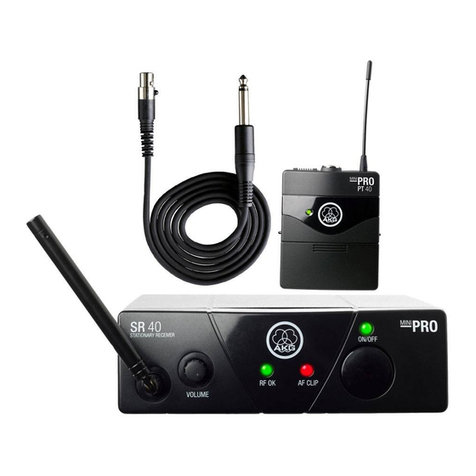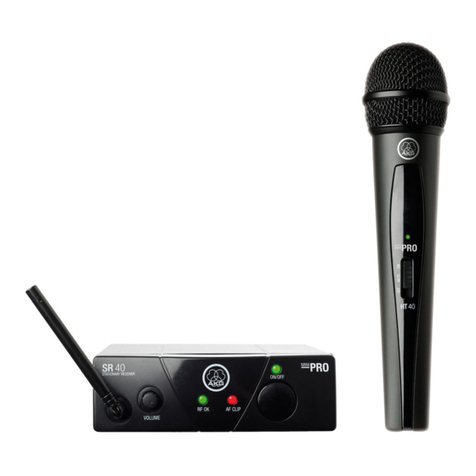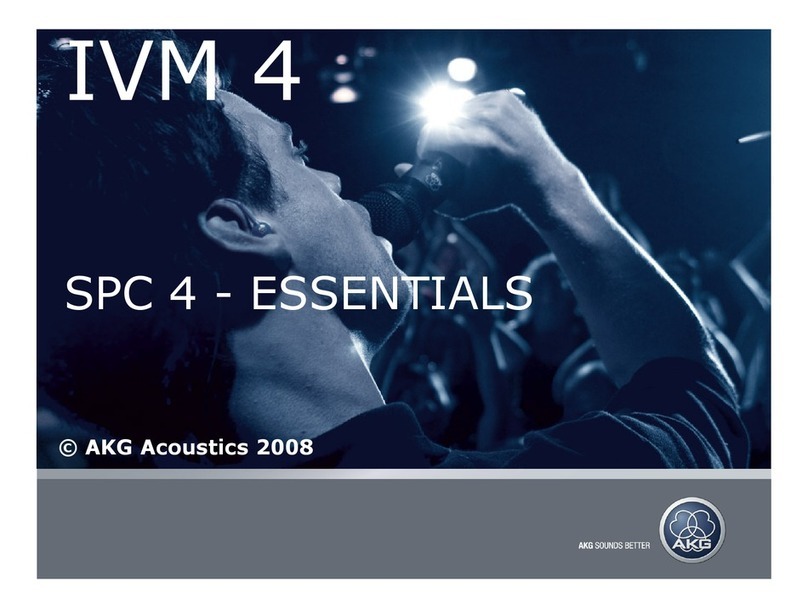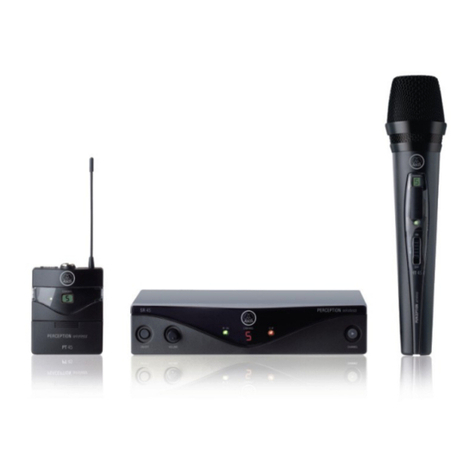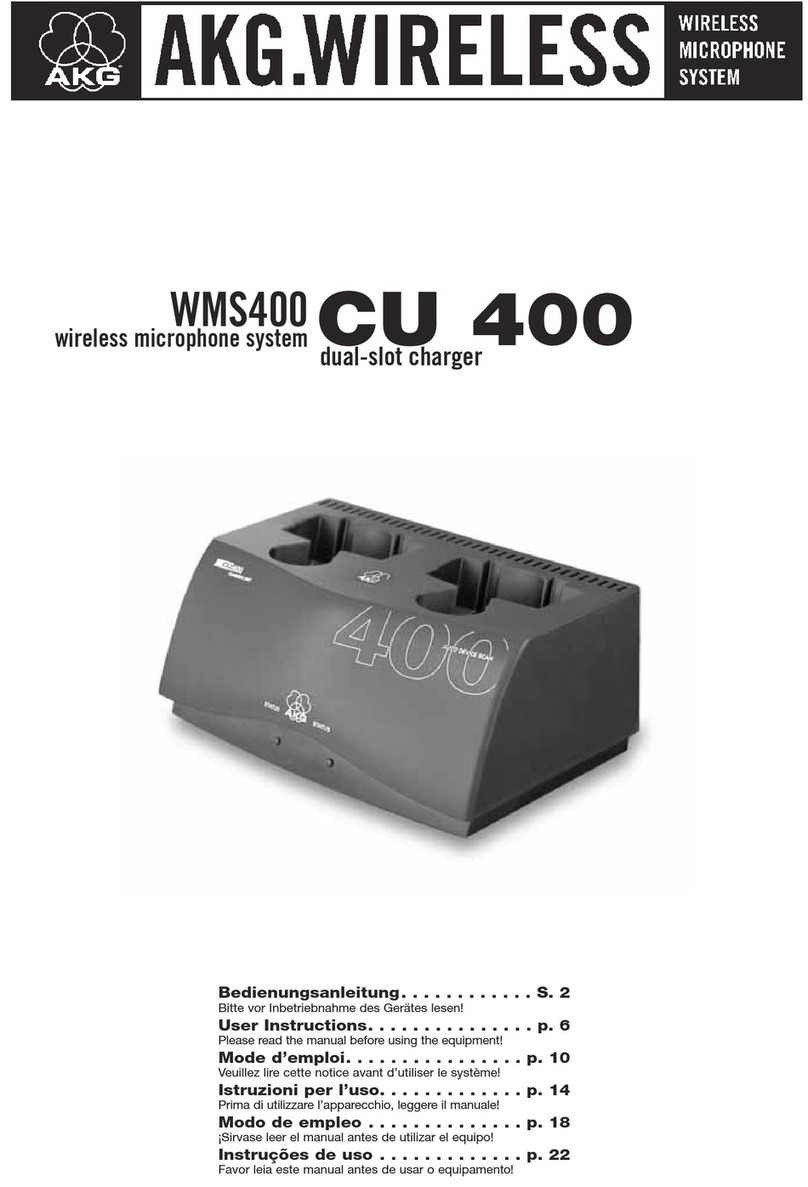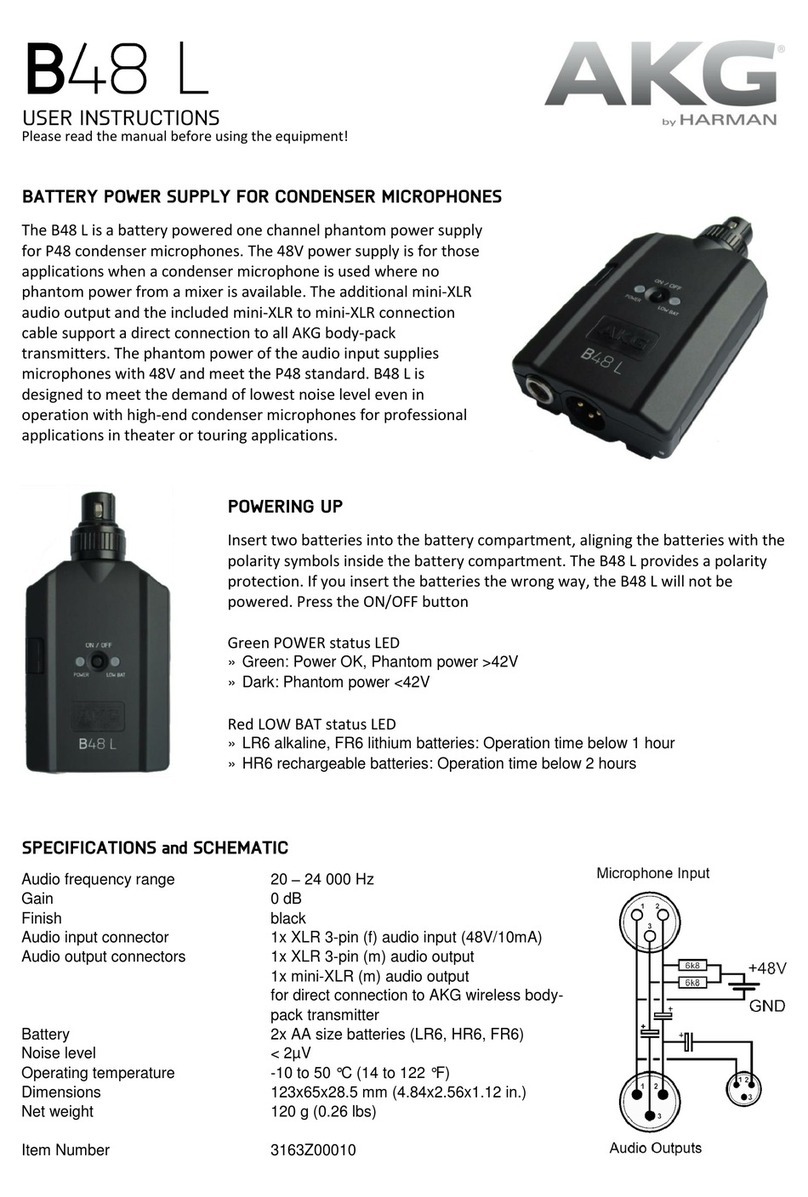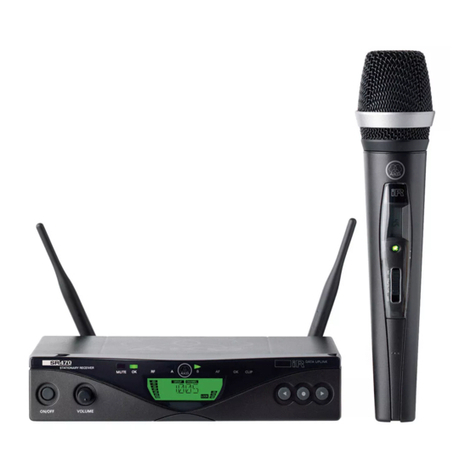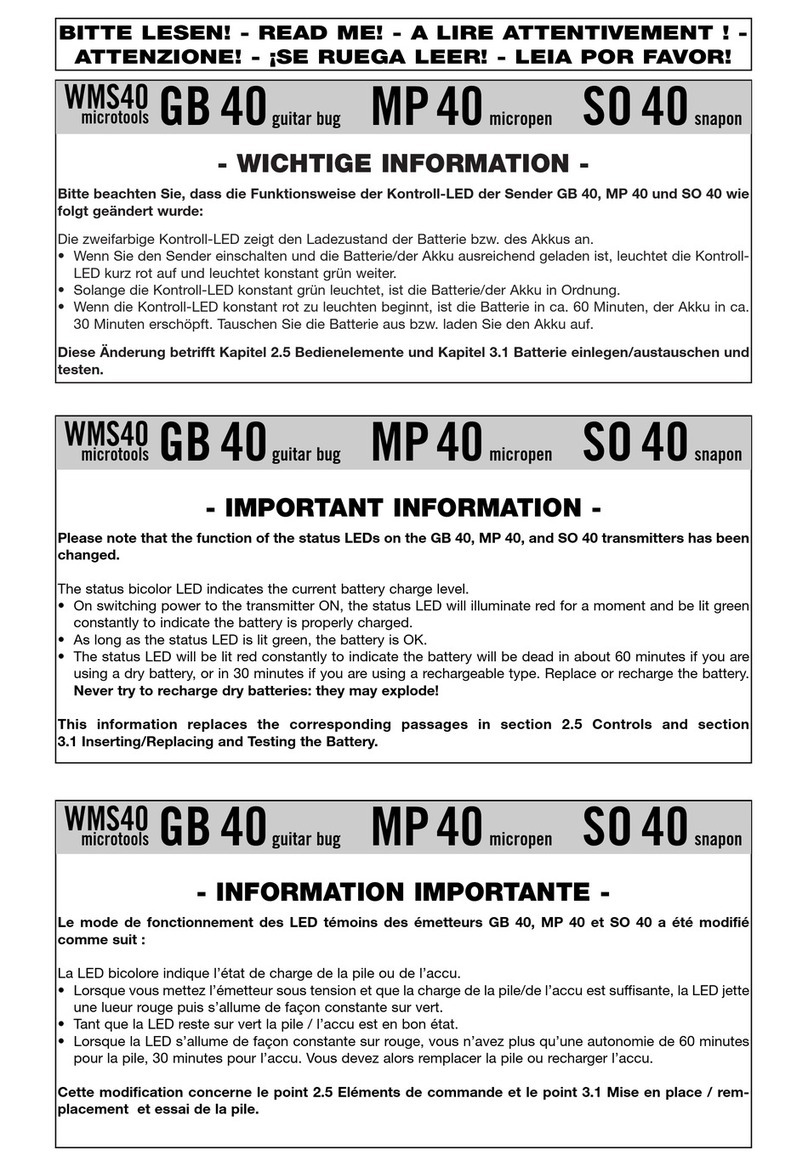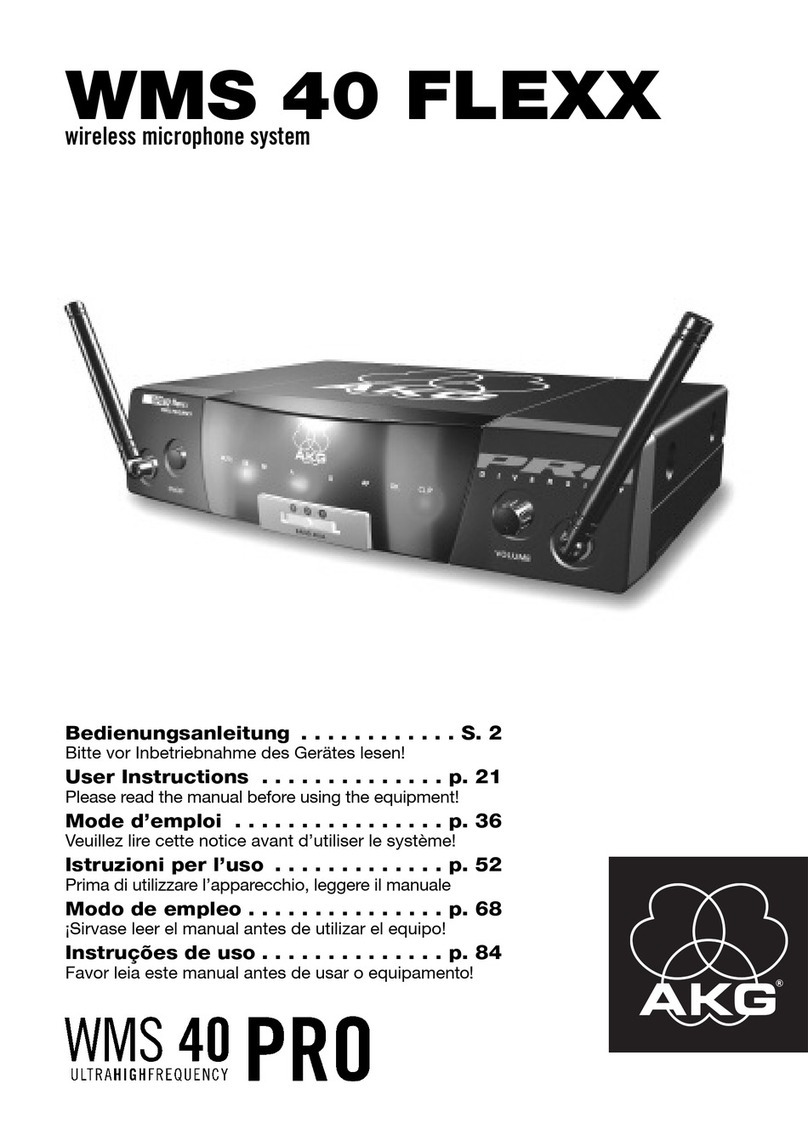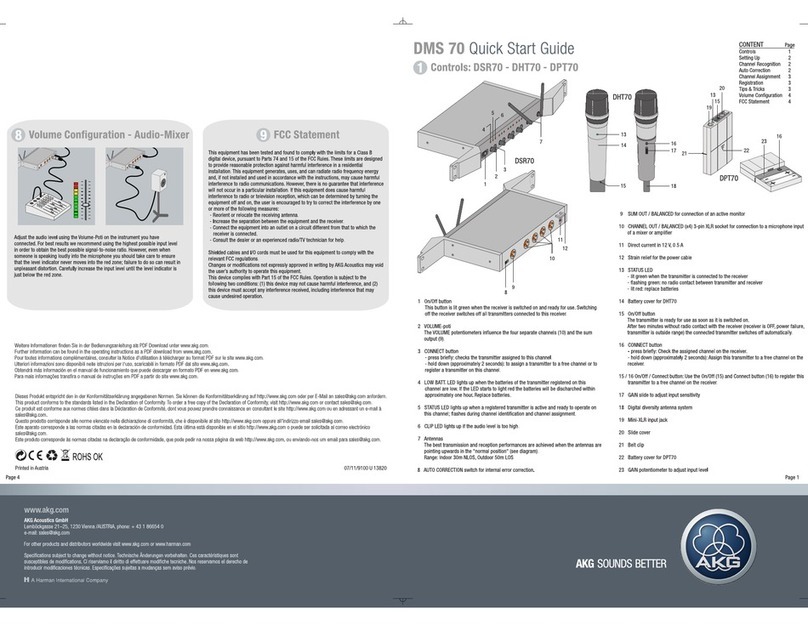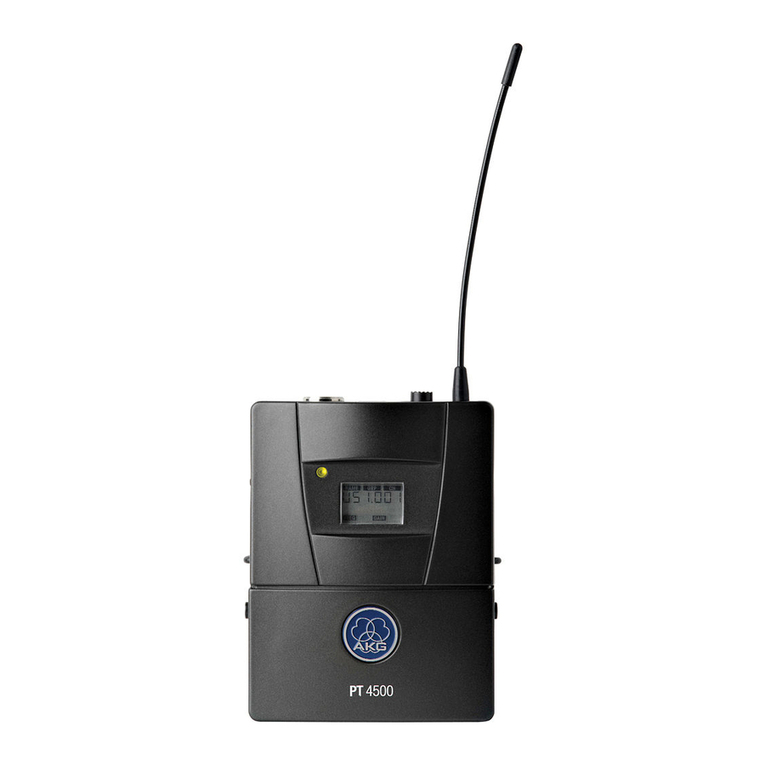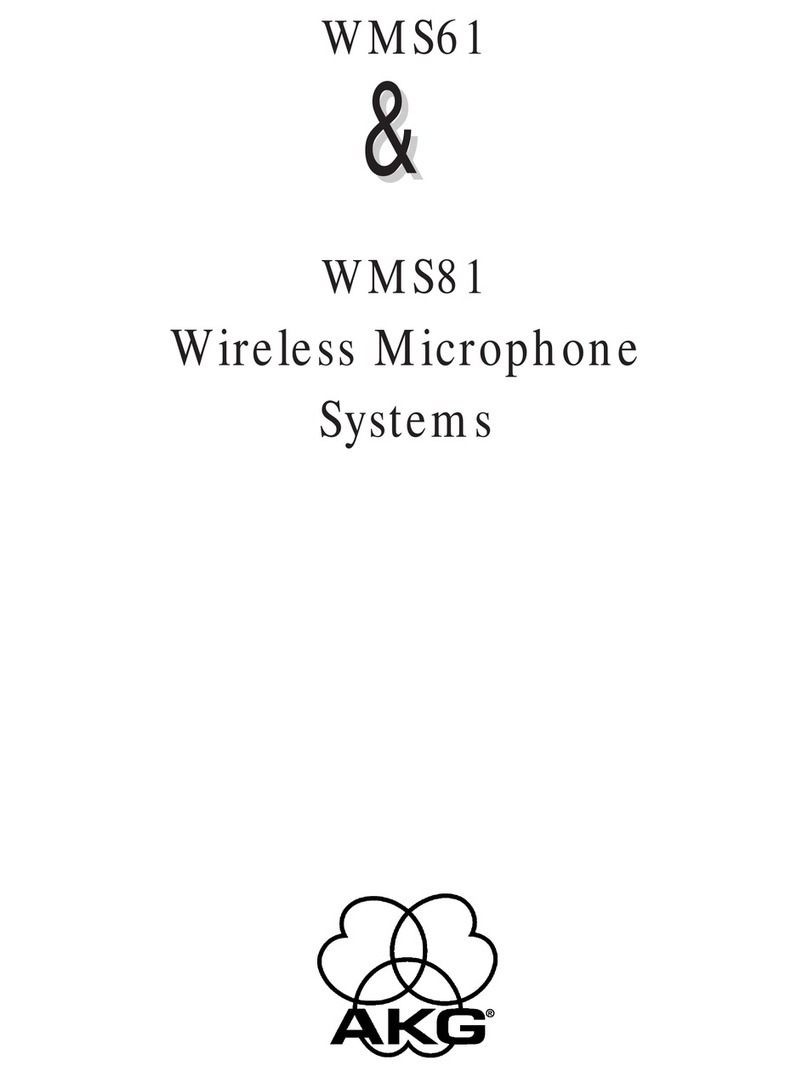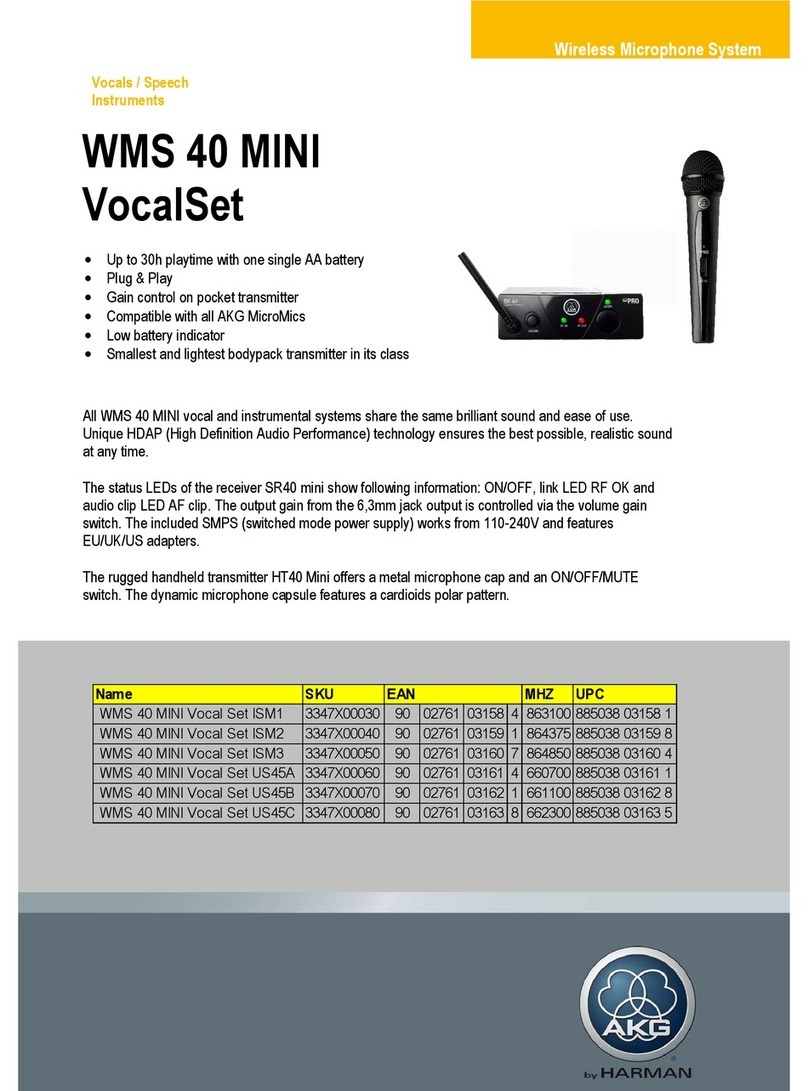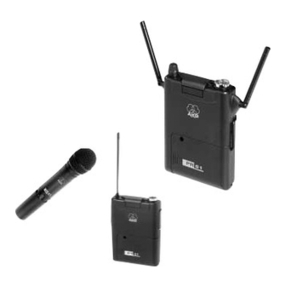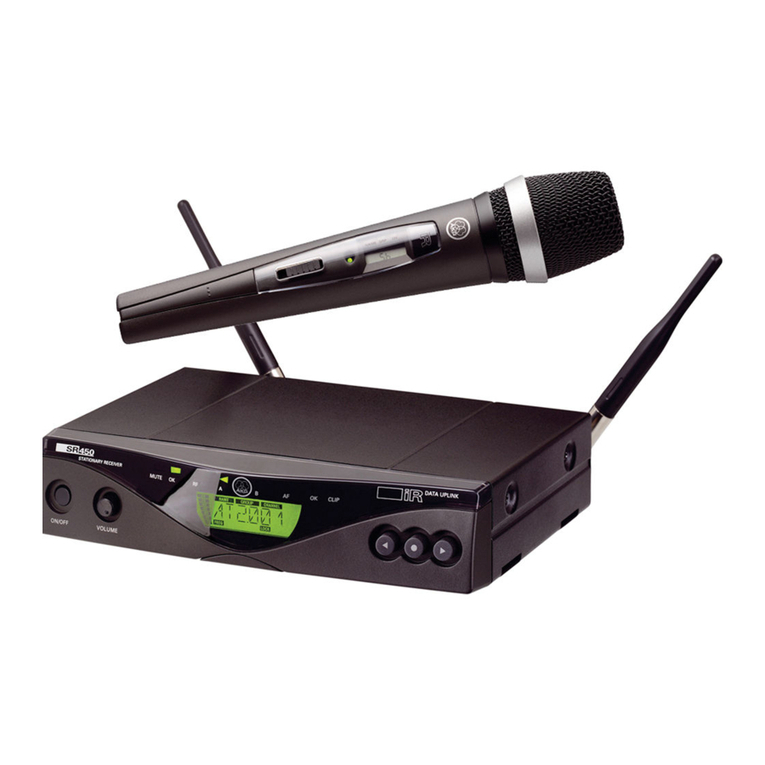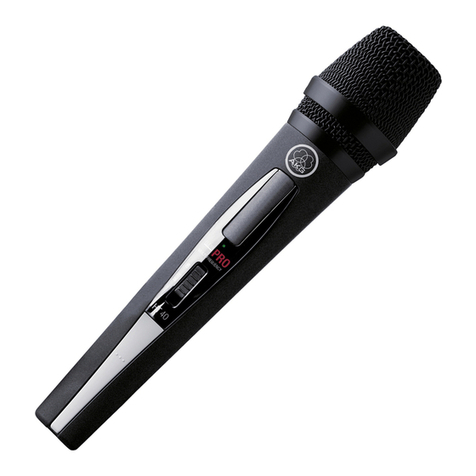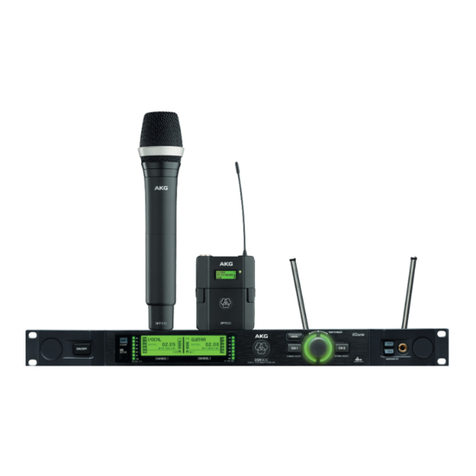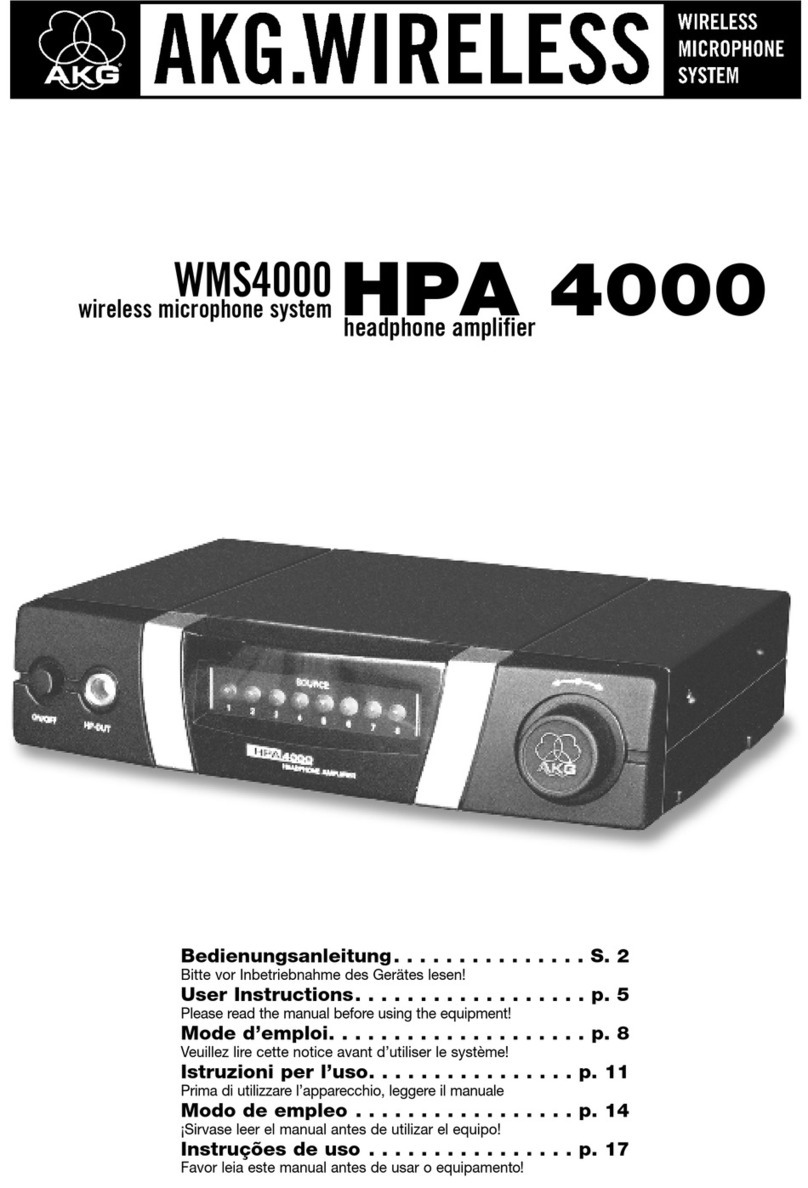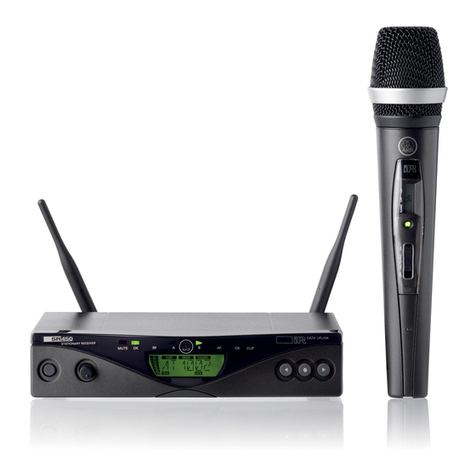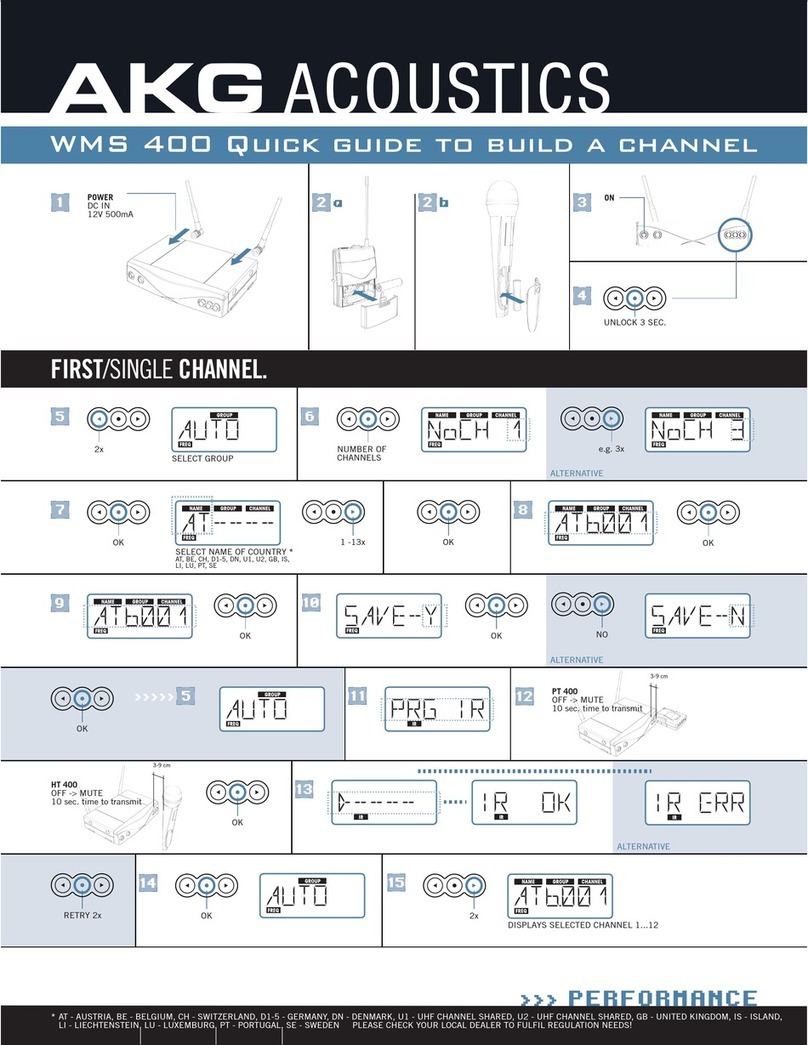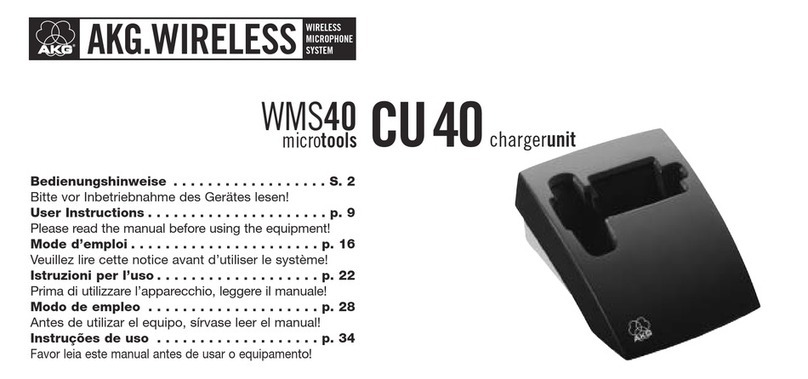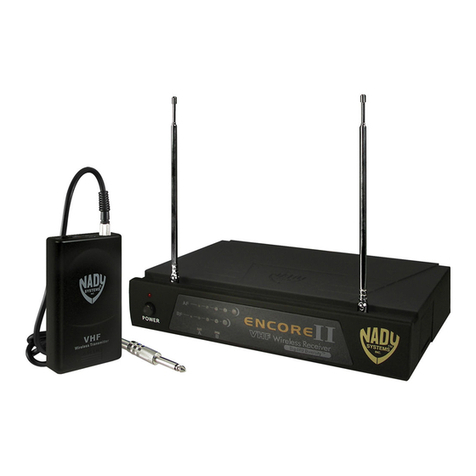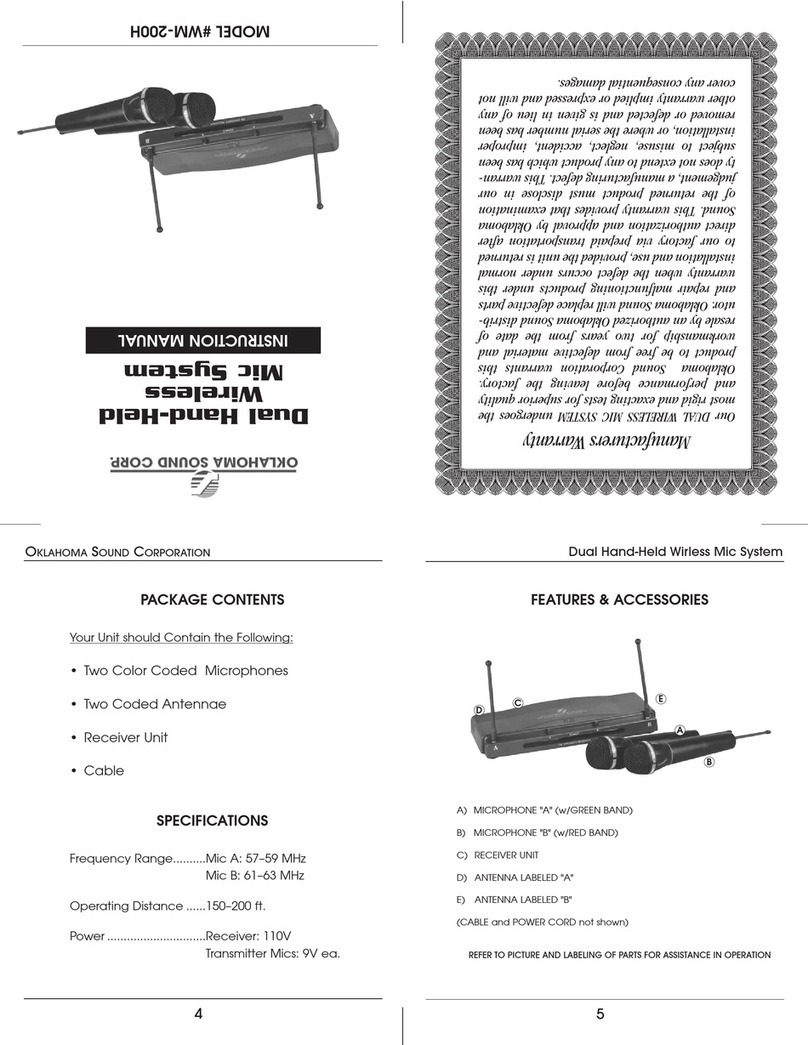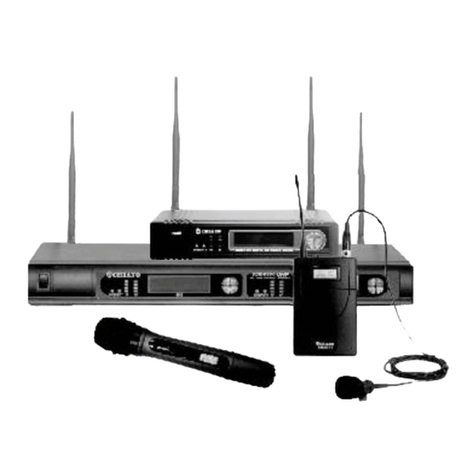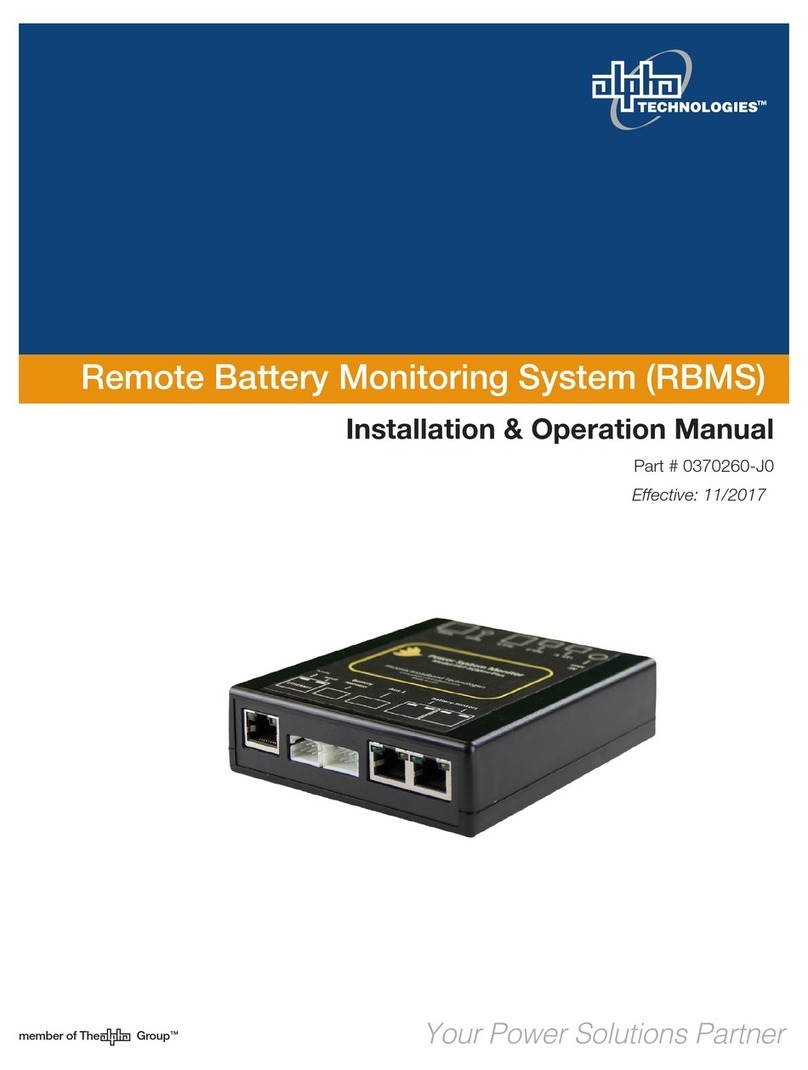1 Safety and Environment
1.1 Safety
1.2 Environment
2.1 Introduction
2.2 Unpacking
2.3 Description
1. Do not spill any liquids on the charger. This may cause short circuits and contaminate the charging
contacts.
2. If any liquid penetrates into the charging receptacle, disconnect the charger from power immediately
and have the charger checked by AKG service personnel.
3. Never use the charger to charge dry batteries. The charger will detect dry batteries and automatical-
ly deactivate the charging function.
4. Use the charger in dry rooms only.
5. The charger may be opened, serviced, and repaired by authorized personnel only. The charger con-
tains no user-serviceable parts.
6. Place the charger at least 1 inch away from walls or other equipment to ensure adequate heat dissi-
pation from the charger. If the charger overheats, the charging cycle will be stopped immediately.
7. Before connecting the charger to power, check that the AC mains voltage stated on the included
power supply is identical to the AC mains voltage available where you will use the charger.
8. Do not operate the charger with any power supply other than the included local power supply or the
optional PSU 4000 central power supply from AKG with an output voltage of 12 VDC. Using a power
supply with an AC output and/or a different output voltage may cause serious damage to the charger.
9. If you will not use the charger for a long period of time, disconnect the charger from power. To pre-
vent unwanted discharging, be sure to remove the transmitter(s) and/or BP 4000 Battery Pack(s) from
the charger every time you disconnect the charger from power.
10.Do not place the charger near heat sources such as radiators, heating ducts, or amplifiers, etc. and
do not expose it to direct sunlight, excessive dust, moisture, rain, mechanical vibrations, or shock.
11.Clean the charger with a moistened (not wet) cloth only. Be sure to disconnect the charger from power
before cleaning the charger! Never use caustic or scouring cleaners or cleaning agents containing
alcohol or solvents since these may damage the enamel and plastic parts.
12.Use the charger for the applications described in this manual only. AKG cannot accept any liability for
damages resulting from improper handling or misuse.
1. The charger will draw a low current even when the charging mode is off. To save energy, disconnect
the charger from power if you will not use the charger for a long period of time. To prevent unwanted
discharging, be sure to remove the transmitter(s) and/or BP 4000 Battery Pack(s) from the charger
every time you disconnect the charger from power.
2. Be sure to dispose of used batteries as required by local waste disposal rules. Never throw batteries
into a fire (risk of explosion) or garbage can.
3. When scrapping the charger, separate the case, circuit boards, and cables, and dispose of all com-
ponents in accordance with local waste disposal rules.
4. The packaging of the charger is recyclabe. To dispose of the packaging, make sure to use a collec-
tion/recycling system provided for that purpose and observe local legislation relating to waste dis-
posal and recycling.
Thank you for purchasing an AKG product. This Manual contains important instructions for setting up and
operating your equipment. Please take a few minutes to read the instructions below carefully before
operating the equipment. Please keep the Manual for future reference. Have fun and impress your audience!
Check that the packaging contains all of the items listed above. Should anything be missing, please con-
tact your AKG dealer.
The CU 4000 has been designed specifically for use with the WMS 4000 system. The CU 4000 and
optional BP 4000 Battery Pack make up an intelligent powering system for the WMS 4000 Series trans-
mitters.
The charger provides two charging slots specially shaped to accept the HT 4000/PT 4000 transmitter or
BP 4000 Battery Pack. The charging slots operate completely independently so you can charge two
BP 4000 Battery Packs simultaneously. Although you do not need to remove the BP 4000 from the trans-
mitter for charging, you may also charge the BP 4000 separately.
Designed specifically for use with the WMS 4000 Series transmitters and the BP 4000 Battery Pack, the
CU 4000 charger
- measures the battery capacity in mAh during each charging cycle;
- generates a flag signaling the end of the charging cycle upon reaching the deflection point (maximum
capacity);
- subtracts the self-discharge of the BP 4000 from the current capacity so the remaining capacity will
always be correctly memorized by the BP 4000. The transmitter will apply the correction for self-dis-
charge as soon as it is switched on outside the charger so the transmitter and receiver can display
the correct remaining battery capacity;
9
CU 4000
2 Description
1 CU 4000 charger
1in-line power supply
(if checked on the packaging)
